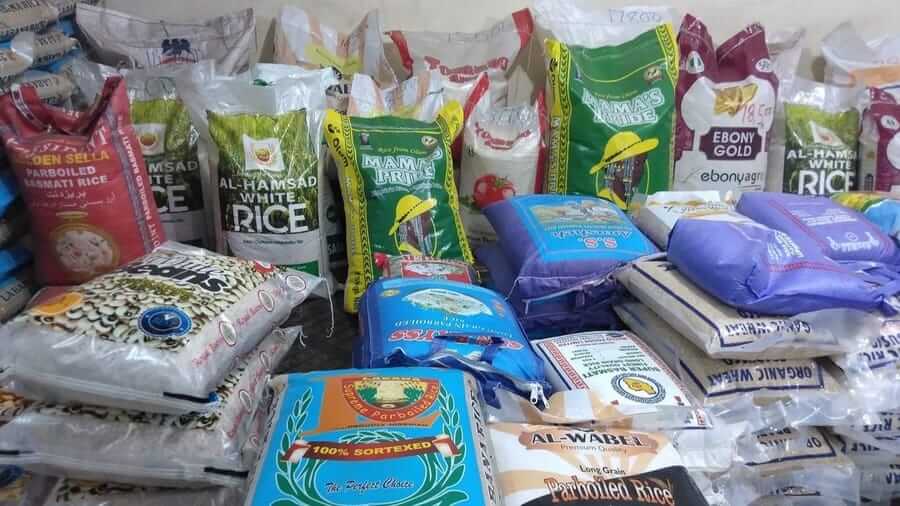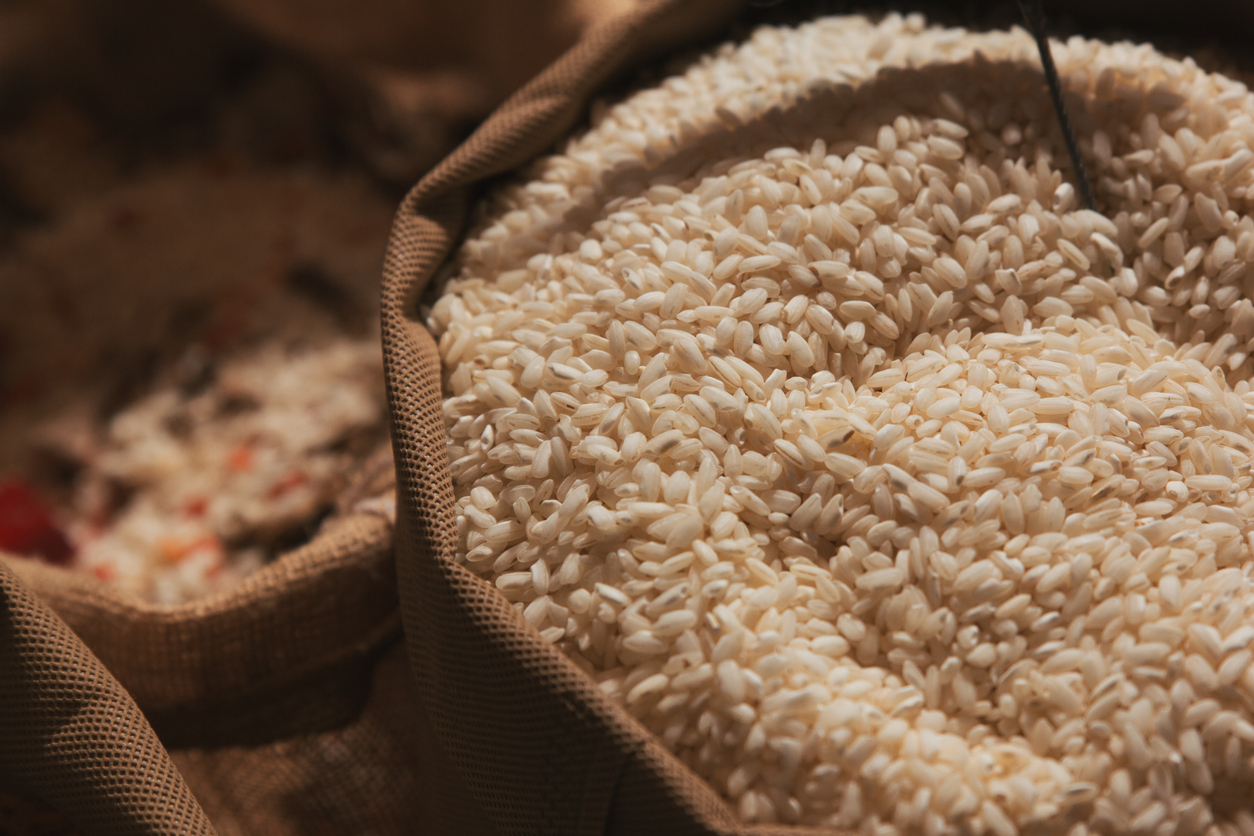As of 2024, the price of a bag of rice in Nigeria has become a significant topic of discussion for both consumers and policymakers. Rice is a staple food in Nigeria, and understanding its pricing dynamics is crucial for managing household budgets and ensuring food security. This article delves into the factors influencing the cost of rice, providing insights that will help you make informed decisions.
The price of rice in Nigeria is not just a matter of economics but also a reflection of the country's agricultural policies, import regulations, and supply chain efficiency. By understanding these elements, we can better comprehend why the cost of rice fluctuates and what measures are being taken to stabilize it.
In this comprehensive guide, we will explore everything you need to know about the cost of rice in Nigeria in 2024. From the current market trends to government interventions, we will uncover the factors that determine how much a bag of rice costs. Whether you are a consumer, a business owner, or a policymaker, this article will provide valuable insights into the rice market in Nigeria.
Read also:Removing Turmeric Stains From Clothes
Table of Contents
- Current Pricing of Rice in Nigeria
- Factors Affecting the Price of Rice
- Government Policies and Their Impact
- Import vs. Local Production
- Market Trends in 2024
- Consumer Perspective on Rice Prices
- Economic Impact of Rice Prices
- Future Projections for Rice Prices
- Tips for Consumers to Manage Rice Costs
- Conclusion
Current Pricing of Rice in Nigeria
As of 2024, the price of a bag of rice in Nigeria varies depending on factors such as the type of rice, its origin, and the region where it is sold. On average, a 50kg bag of locally produced rice costs between ₦25,000 and ₦30,000, while imported rice ranges from ₦35,000 to ₦45,000 per bag. These figures reflect the ongoing dynamics in the Nigerian rice market.
Price Variations Across Regions
Prices can differ significantly across regions due to transportation costs and local supply conditions. For instance, states in the northern part of Nigeria, where rice cultivation is more prevalent, tend to have lower prices compared to southern states that rely more on imports.
Factors Affecting the Price of Rice
Several factors contribute to the fluctuation of rice prices in Nigeria. Understanding these elements is essential for predicting future trends and making informed purchasing decisions.
Supply and Demand Dynamics
Like any other commodity, the price of rice is heavily influenced by supply and demand. When local production falls short of meeting consumer needs, prices tend to rise. Conversely, an oversupply can lead to lower prices.
Import Tariffs and Regulations
Government policies on import tariffs play a significant role in determining the cost of imported rice. Higher tariffs can increase the price of imported rice, making locally produced rice more competitive in the market.
Government Policies and Their Impact
The Nigerian government has implemented several policies aimed at boosting local rice production and reducing dependency on imports. These initiatives include subsidies for farmers, investment in agricultural infrastructure, and the promotion of modern farming techniques.
Read also:Livvy Dunne Age 12
Subsidies for Local Farmers
Subsidies provided to local farmers help reduce production costs, making it possible for them to compete with imported rice. This support is crucial for ensuring the sustainability of the local rice industry.
Import vs. Local Production
One of the critical debates in the Nigerian rice market revolves around the balance between imported and locally produced rice. While imported rice often offers higher quality and consistency, locally produced rice supports the domestic economy and promotes food security.
Quality and Consistency
Imported rice is generally perceived to be of higher quality and more consistent in terms of grain size and texture. However, advancements in local rice production are gradually closing this gap, making Nigerian-grown rice a viable alternative.
Market Trends in 2024
In 2024, the Nigerian rice market is experiencing several notable trends that are shaping the industry. These trends include increased investment in rice farming, the adoption of technology in agriculture, and shifts in consumer preferences.
Increased Investment in Rice Farming
Both public and private sectors are investing heavily in rice farming, aiming to boost production and reduce reliance on imports. This investment is expected to lead to increased yields and lower prices over time.
Consumer Perspective on Rice Prices
For consumers, the price of rice is a critical factor in managing household budgets. Rising prices can have a significant impact on the cost of living, especially for low-income families. Understanding the reasons behind price fluctuations can help consumers make better purchasing decisions.
Impact on Household Budgets
With rice being a staple food, any increase in its price directly affects the affordability of daily meals. Consumers are increasingly looking for ways to stretch their budgets by opting for locally produced rice or exploring alternative staples.
Economic Impact of Rice Prices
The price of rice has far-reaching economic implications, affecting not only consumers but also businesses and the overall economy. Fluctuations in rice prices can influence inflation rates and impact the trade balance.
Inflation and Economic Stability
Rice price increases can contribute to inflation, making it more challenging for the government to maintain economic stability. Policymakers must carefully consider the impact of rice pricing on the broader economy when formulating strategies.
Future Projections for Rice Prices
Looking ahead, the future of rice prices in Nigeria will depend on several factors, including global market trends, local production levels, and government policies. Experts predict that with continued investment in agriculture and supportive policies, the price of locally produced rice could stabilize or even decrease in the coming years.
Global Market Influence
Global rice prices can also influence the local market, especially if Nigeria continues to rely on imports. Keeping an eye on international trends is essential for understanding potential price movements in the domestic market.
Tips for Consumers to Manage Rice Costs
For consumers, managing the cost of rice involves making smart purchasing decisions and exploring alternative options. Here are some tips to help you save money while still enjoying this essential staple:
- Opt for locally produced rice when possible
- Buy in bulk to take advantage of lower prices per unit
- Compare prices across different retailers
- Consider alternative staples during times of high rice prices
Conclusion
The price of a bag of rice in Nigeria in 2024 is influenced by a complex interplay of factors, including supply and demand dynamics, government policies, and global market trends. By understanding these elements, consumers and policymakers can better navigate the challenges and opportunities presented by the rice market.
We encourage readers to share their thoughts and experiences regarding rice prices in Nigeria. Your feedback can help others make informed decisions and contribute to the ongoing discussion on this vital topic. Additionally, explore other articles on our site for more insights into the Nigerian economy and agriculture sector.


